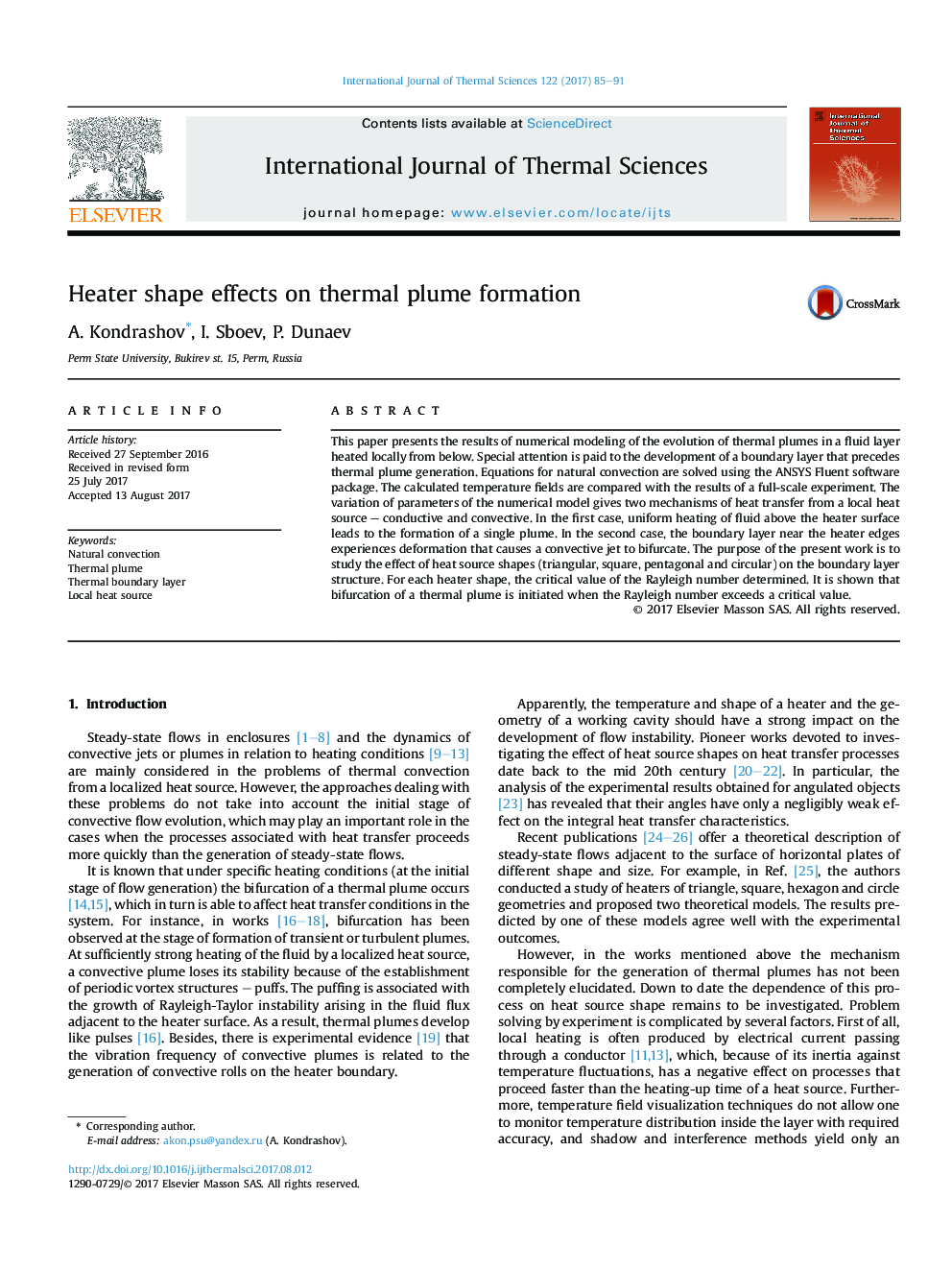| Article ID | Journal | Published Year | Pages | File Type |
|---|---|---|---|---|
| 4995189 | International Journal of Thermal Sciences | 2017 | 7 Pages |
Abstract
This paper presents the results of numerical modeling of the evolution of thermal plumes in a fluid layer heated locally from below. Special attention is paid to the development of a boundary layer that precedes thermal plume generation. Equations for natural convection are solved using the ANSYS Fluent software package. The calculated temperature fields are compared with the results of a full-scale experiment. The variation of parameters of the numerical model gives two mechanisms of heat transfer from a local heat source - conductive and convective. In the first case, uniform heating of fluid above the heater surface leads to the formation of a single plume. In the second case, the boundary layer near the heater edges experiences deformation that causes a convective jet to bifurcate. The purpose of the present work is to study the effect of heat source shapes (triangular, square, pentagonal and circular) on the boundary layer structure. For each heater shape, the critical value of the Rayleigh number determined. It is shown that bifurcation of a thermal plume is initiated when the Rayleigh number exceeds a critical value.
Related Topics
Physical Sciences and Engineering
Chemical Engineering
Fluid Flow and Transfer Processes
Authors
A. Kondrashov, I. Sboev, P. Dunaev,
